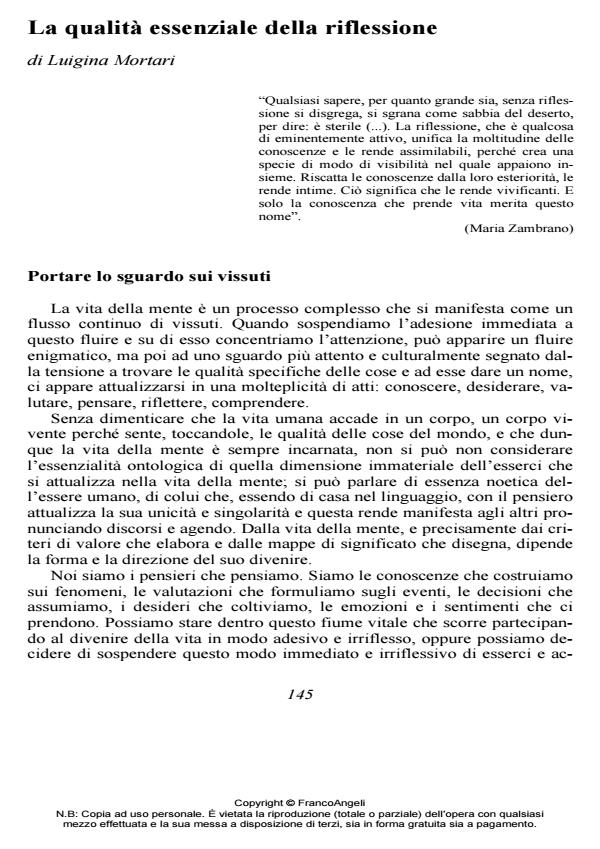The Essential Quality of Reflection
Journal title EDUCATIONAL REFLECTIVE PRACTICES
Author/s Luigina Mortari
Publishing Year 2011 Issue 2011/1-2
Language Italian Pages 12 P. 145-156 File size 328 KB
DOI 10.3280/ERP2011-001009
DOI is like a bar code for intellectual property: to have more infomation
click here
Below, you can see the article first page
If you want to buy this article in PDF format, you can do it, following the instructions to buy download credits

FrancoAngeli is member of Publishers International Linking Association, Inc (PILA), a not-for-profit association which run the CrossRef service enabling links to and from online scholarly content.
The study takes into consideration how phenomenology in the Husserlian version conceptualizes reflection. The reflective act is a metacognitive act because it is a kind of thinking which thinks thoughts; promoting a reflection so conceived is an undertaking which has implications on the whole experiential domain of the subject, since it implies interrupting the adhesion to the usual occurring of things in order to focus on a look inwards the life of mind. Phenomenology does not confine itself to indicating the essence of the reflective act but makes explicit by which cognitive procedure it can be actualized. The study, then, examines the educational implications of the reflective discipline and the resulting cultural gains, first and foremost the development of experiential knowledge, that is, that kind of living knowledge that takes shape when thinking accompanies action, by questioning experience while it is happening.
- Riflettere e scrivere nelle pratiche professionali: un percorso autoetnografico di narrazione di sé Chiara Biasin, Elisa Albertini, in EDUCATIONAL REFLECTIVE PRACTICES 1/2023 pp.215
DOI: 10.3280/erp1-2023oa15888 - Educazione degli Adulti: politiche, percorsi, prospettive Antonia Cunti, pp.91 (ISBN:979-12-215-0006-6)
Luigina Mortari, La qualità essenziale della riflessione in "EDUCATIONAL REFLECTIVE PRACTICES" 1-2/2011, pp 145-156, DOI: 10.3280/ERP2011-001009